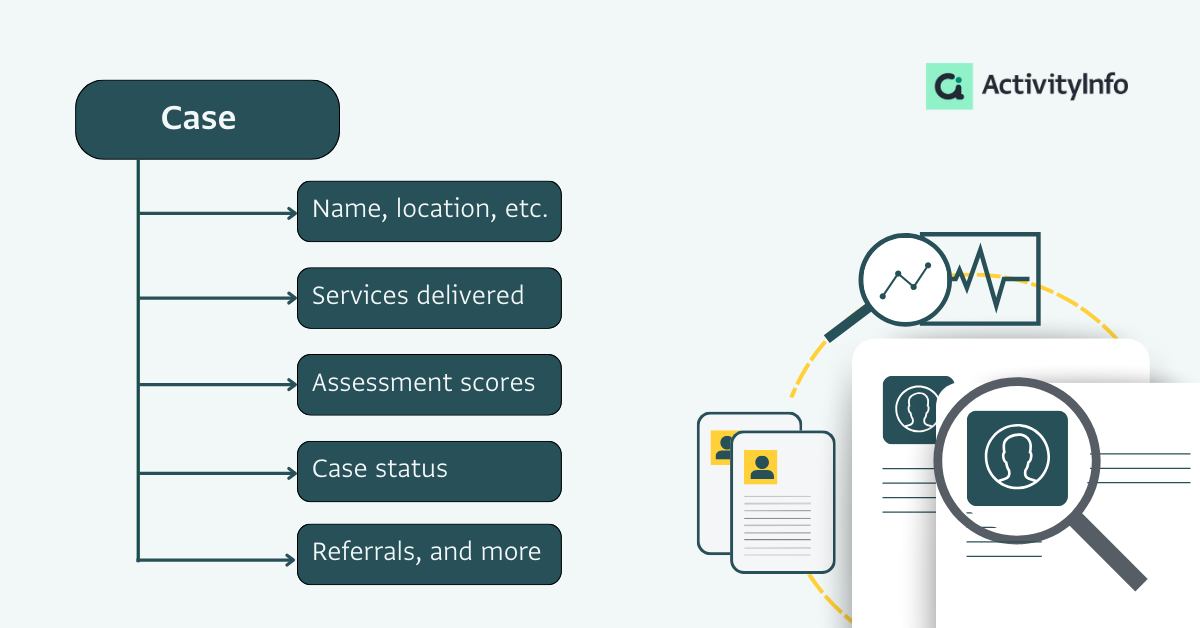Getting started with data in case management: a beginner's guide
Whether you're supporting individuals or coordinating services, learning how to collect and use data effectively is a critical skill for every team member in your case management team. This guide will walk you through the essentials related to data in case management, and it is especially useful, if you're just getting started.

What do we mean by data in case management?
Data is any structured information that helps us understand and improve casework. In a case management setting, data can include:
- Names, demographic information, and locations
- Services delivered and time of delivery
- Assessment scores or vulnerability scales
- Case status and outcomes
- Referrals made and followed up on
- Notes or observations can also become data if they’re categorized or tagged in consistent ways.
Data is what helps you stay organized across multiple cases so as to follow up on time and spot missed actions. With good data you can quickly and accurately report progress to donors and partners and learn what’s working and what isn’t. Lastly, good data helps you advocate for more resources for your team.
A good starting point is to make sure to collect only what you need, stay consistent, and follow up on what you record.
Wondering what the difference between data and information is? Take a look at the article “A guide to information management systems for development projects” for more information.
Five simple steps to get started working with data for case management
Here are some practical first steps for caseworkers and new Information Management staff.
1. Start small and focus on what matters
You don’t need to collect everything. Begin with the basics, think of what you need to know to support a case, track progress, or report back. Use official guidelines that list what you need to track and make sure to stick to essential data points like:
- Date of intake
- Type of service provided
- Caseworker responsible
- Case status (open, on hold, closed)
After you complete this part of your system, you can consider adding fields that will help you track more aspects of your cases.
2. Use dropdowns and checkboxes
When you design the forms that will collect the information for your cases, aim for structures that enhance ease-of-use and data quality. Even though free text is helpful for context, structured fields like dropdown menus, multiple-choice options, or yes/no questions help keep your data clean and easy to analyze.
A nice exercise to start with is to try turning case worker’s notes into usable data via specific types of form fields. Take a look at the article “From notes to numbers: how to turn casework into usable data for case management” for more information.
3. Be consistent with wording and spelling
Choose clear terms and stick to them. For example, always call a support visit “Home Visit,” not “home check,” “visit,” or “monitoring trip.” This makes your data easier to sort, filter, and understand later.
4. Review your data regularly
Take some minutes weekly to check your records. Look for incomplete entries, strange dates, or any errors. Set calendar reminders to review at regular intervals.
5. Talk with your M&E or IM team
Ask for help understanding what’s being tracked, why it matters, and how it’s being used. Building a shared understanding helps you collect better data and feel more connected to its purpose.
Are you building a case management system in ActivityInfo? Then, make sure to leverage required fields, calculated fields, and validation rules as well as the relational database model that allows you to link forms to each other. Lastly, ensure you create dedicated roles for the users of the system applying relevant user permissions to protect sensitive data.
Still need help with the design of your system or wondering if ActivityInfo can support your case management activities? Never hesitate to contact us!